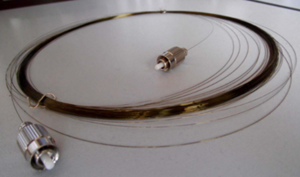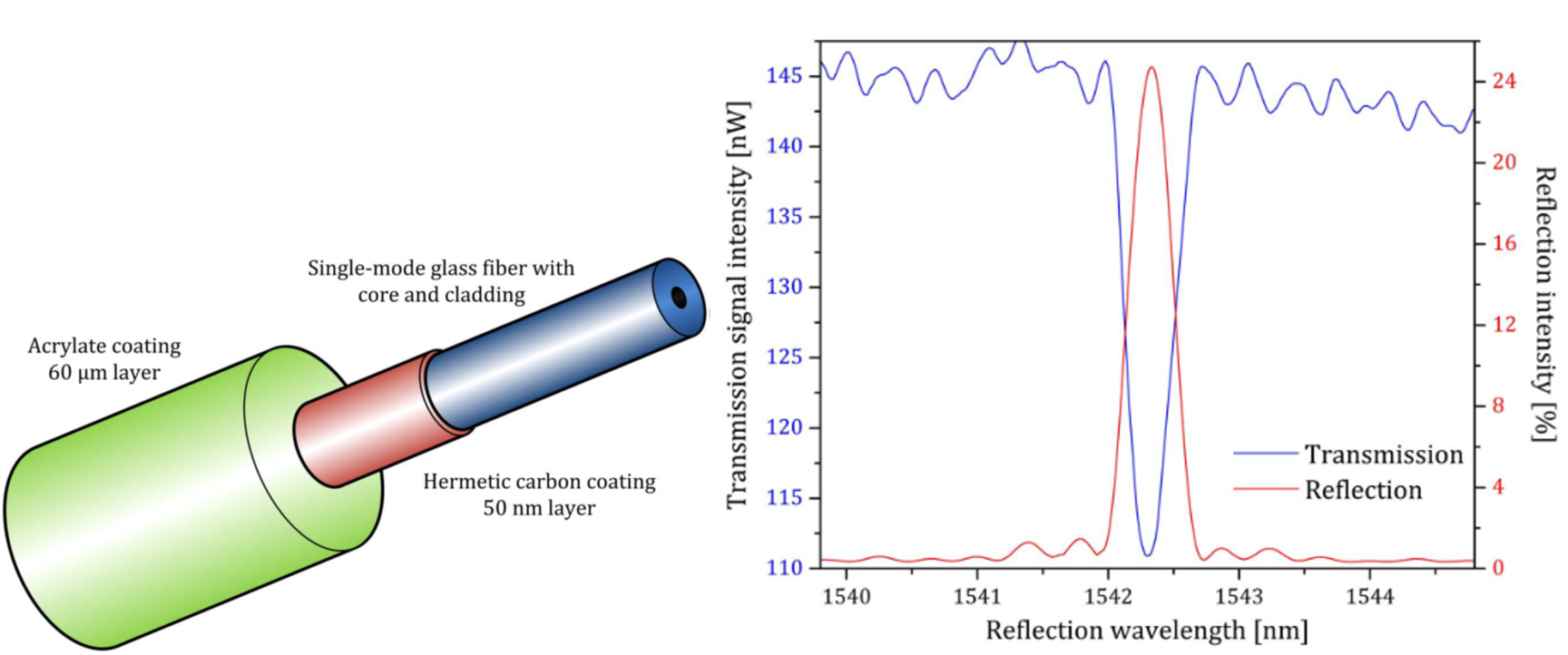
Hydrogen resistant fiber Bragg grating sensors
Funded by Federal Ministry for Economic Affairs and Climate Action (BMWK, AiF)
Duration: March 2022 – February 2024
Hydrogen will play an important role in the growing renewable energy economy. As a storable secondary energy source, it can be used in a variety of ways, e.g. as fuel in mobility and transportation or as raw material in the chemical industry. In the field of hydrogen technology, many different electrical sensors are currently used to measure temperatures, strains or pressures, even in the presence of a hydrogen-containing atmosphere. Fiber optic sensors based on Fiber Bragg Grating (FBG) technology basically meet the sensor specifications required in these applications, with additional advantages in the areas of sensor multiplexing, response time, sensor accuracy, sensor dynamic range and explosion protection. However, FBG sensors in standard glass fiber without an additional sensor housing are not hydrogen resistant in the long term due to hydrogen-induced fiber attenuation ("hydrogen darkening"). Fortunately, special hydrogen-resistant single-mode glass fibers with carbon cladding are already available for the oil & gas industry. For these hydrogen-resistant single-mode fibers, an FBG manufacturing process is to be developed as part of the research project in order to be able to offer fiber-optic temperature and strain sensor technology in the field of the oil & gas industry as well as the hydrogen industry.
Source / Reference of the images:
A. Nedjalkov et al., “Direct inscription and evaluation of fiber Bragg gratings in carbon-coated optical sensor glass fibers for harsh environment oil and gas applications,” Appl. Opt., vol. 57, no. 26, p. 7515, Sep. 2018, doi: 10.1364/AO.57.007515.
